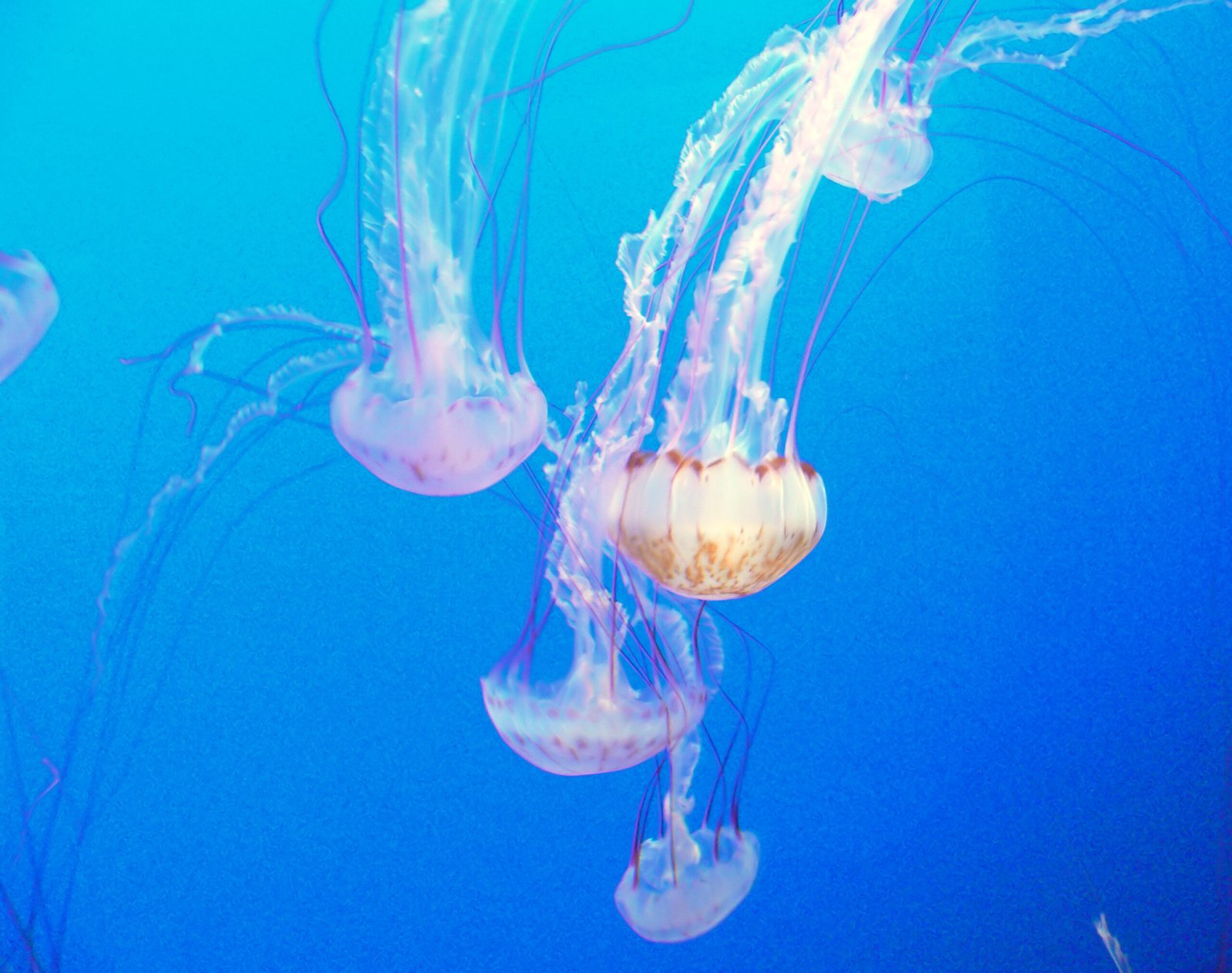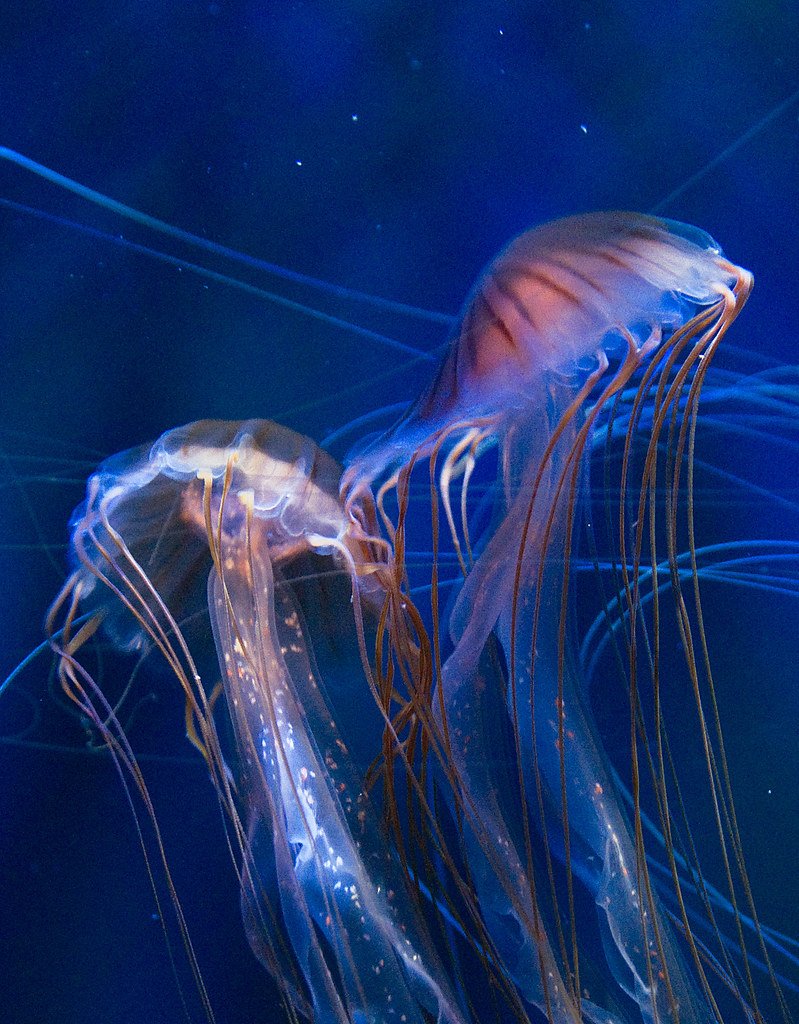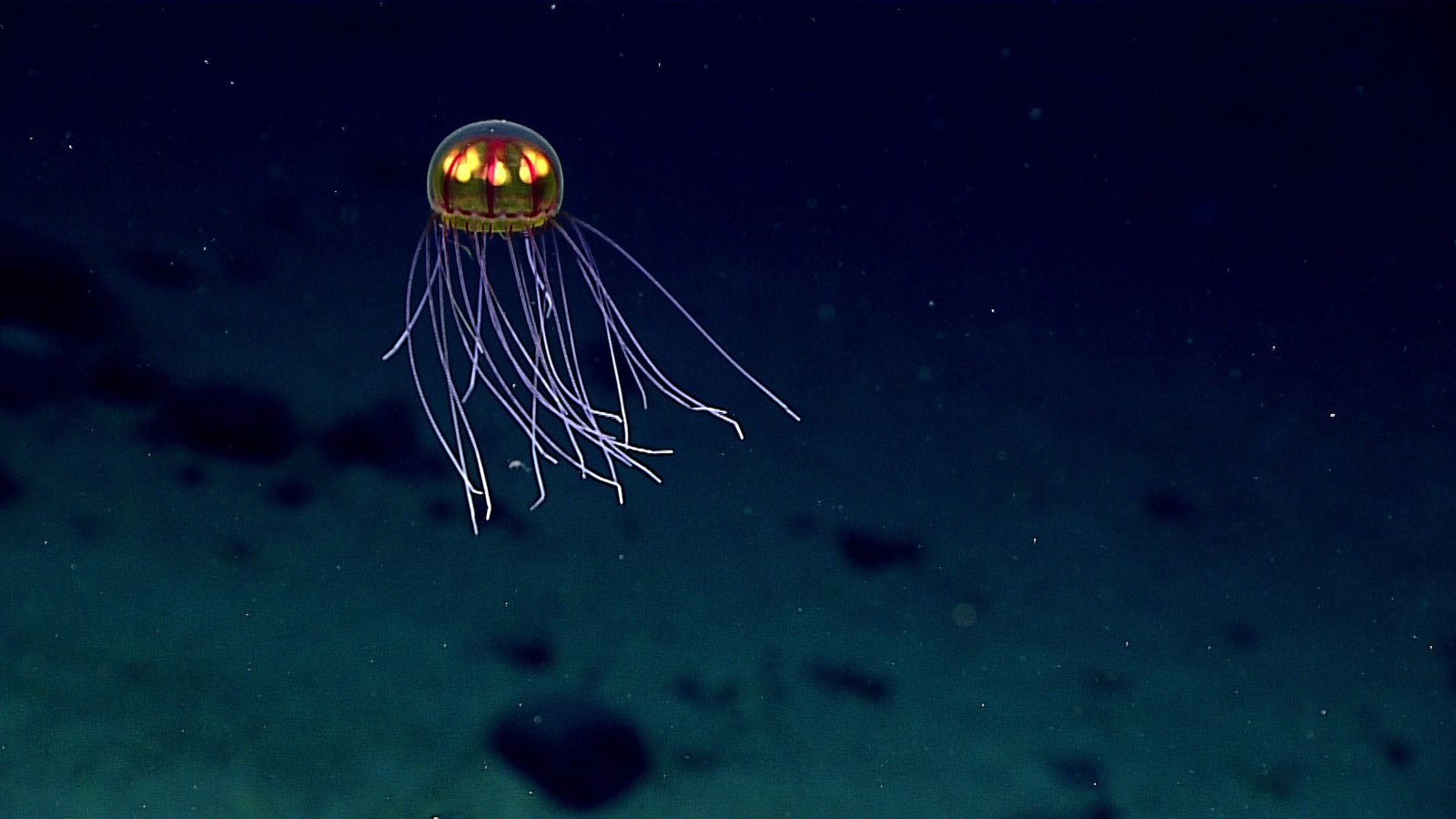Picture this: you’re floating in the open ocean, surrounded by shimmering sunlight and the gentle sway of the waves. Suddenly, a transparent, ghostly creature drifts by—delicate, mesmerizing, and deadly. The jellyfish, often admired for its ethereal beauty, hides a shocking secret beneath its graceful surface. Some species possess a gruesome talent: they can begin digesting their prey while it’s still alive, trapped and helpless inside their gelatinous embrace. This chilling process is not only fascinating but also highlights the raw power of nature’s most unlikely predators. Let’s dive deep into the mysterious world of jellyfish and uncover how these ancient creatures turn mealtime into a living nightmare for their victims.
The Silent Hunters of the Sea
Jellyfish are often underestimated because of their gentle, floating appearance. But beneath that calm exterior lies a highly effective predator. With their long, stinging tentacles, jellyfish can paralyze tiny fish, shrimp, and even larger sea creatures within seconds. Their hunting style is quiet and almost invisible, making them one of the ocean’s most efficient ambush predators. Unlike sharks or dolphins that chase their prey, jellyfish simply drift and wait, letting unsuspecting victims swim straight into their trap. The silence of their attack is what makes them so successful—and so terrifying for anything small enough to be their next meal.
Tentacles: Nature’s Lethal Lasso
The true power of a jellyfish lies in its tentacles, which are armed with thousands of specialized cells called nematocysts. These tiny capsules work like microscopic harpoons, firing venom into any creature that touches them. When a fish or crustacean brushes against a tentacle, it’s instantly stunned or paralyzed, unable to escape. The venom not only immobilizes the prey but also starts breaking down its tissues, making it easier for the jellyfish to digest. It’s a clever system that turns a simple touch into a matter of life and death. Some jellyfish have tentacles that stretch for meters, casting a wide net to catch as much prey as possible.
Capturing and Engulfing the Prey
Once a jellyfish’s tentacles have snared a victim, the real nightmare begins. The tentacles contract and bring the struggling prey toward the jellyfish’s mouth—often located on the underside of its bell. Unlike many animals, jellyfish don’t chew. Instead, they use their mouth to push the whole, often still-living, prey into their gastrovascular cavity, a simple stomach-like chamber. Here, digestion begins immediately, even as the prey continues to move and struggle. It’s a process that’s both efficient and chilling to imagine: a creature slowly dissolving while still alive, trapped in a living chamber of gelatinous tissue.
Digesting While Alive: A Gruesome Process
The idea of being eaten alive is horrifying, and for the prey of some jellyfish, it’s a reality. Inside the jellyfish’s body, digestive enzymes are secreted into the cavity, breaking down the prey’s tissues while it’s still conscious. The prey’s movements become weaker as the enzymes do their work, but the process is not instantaneous. In some cases, small fish or shrimp can remain alive for several minutes, slowly succumbing to the acidic environment. This method of digestion is surprisingly effective, allowing jellyfish to extract as many nutrients as possible from their meals.
The Science Behind Extracellular Digestion
Jellyfish use a digestive strategy known as extracellular digestion. Unlike humans, who chew and break down food in the mouth and then in the stomach, jellyfish release enzymes directly onto their prey inside the gastrovascular cavity. These enzymes liquefy the prey’s tissues, making it easier for the jellyfish to absorb the nutrients. This process is essential because jellyfish lack complex organs like intestines or a true stomach. By digesting food externally and absorbing it through their thin tissues, they can survive with a surprisingly simple anatomy. This simplicity is one reason why jellyfish have thrived for over 500 million years.
A Glimpse Into Evolution’s Dark Side
The ability to digest prey alive may seem cruel, but it’s a remarkable adaptation shaped by millions of years of evolution. Jellyfish are among the oldest living animals on the planet, and their digestive strategy is a testament to their survival skills. By immobilizing and digesting prey quickly, they reduce the risk of losing their meal to other predators or strong ocean currents. This evolutionary path may appear brutal, but in the competitive world of the ocean, it’s simply survival of the fittest. Jellyfish have mastered the art of efficiency, making the most of every meal that crosses their path.
Diversity Among Jellyfish Species
Not all jellyfish digest their prey in the same way. Some, like the infamous box jellyfish, deliver incredibly potent venom that kills prey almost instantly, while others rely on slower-acting toxins. The moon jellyfish, common in many oceans, can trap and digest tiny zooplankton alive, but their venom is mild compared to other species. This diversity in hunting and digestion strategies allows jellyfish to occupy many different niches in the marine ecosystem. Whether in shallow coastal waters or the deep sea, there’s a jellyfish perfectly adapted for its environment, each with its own terrifying twist on digestion.
Impacts on Marine Food Webs

Jellyfish play a crucial role in the marine food web, and their unique way of digesting prey has ripple effects throughout the ecosystem. By consuming large numbers of plankton, fish larvae, and even small fish, jellyfish can influence the populations of other marine species. In some regions, jellyfish blooms—explosive increases in their numbers—have been linked to declines in fish stocks and changes in local biodiversity. Their ability to digest prey alive means they can outcompete other predators, especially when food is scarce. This power makes jellyfish both fascinating and formidable players in the ocean’s delicate balance.
Surprising Encounters With Humans

While jellyfish mostly prey on small marine animals, their encounters with humans can also be unforgettable. Swimmers stung by jellyfish often experience pain, redness, and swelling—a small taste of what their prey feels. In rare cases, powerful venom from species like the box jellyfish can be deadly to humans. These encounters remind us of the jellyfish’s hidden strength and the importance of respecting these ancient creatures. Whether admired from afar or feared up close, jellyfish inspire awe and caution in equal measure.
Nature’s Unsettling Genius

The jellyfish’s method of digesting prey while it’s still alive is a striking example of nature’s ingenuity—and its occasional cruelty. What seems shocking to us is simply another strategy in the endless quest for survival beneath the waves. With their translucent bodies and seemingly passive behavior, jellyfish are masters of disguise, hiding their lethal capabilities in plain sight. Their existence challenges our perceptions of beauty and danger in the natural world, reminding us that even the most graceful creatures can harbor astonishing secrets.
A Final Reflection on Jellyfish’s Dark Feast
Jellyfish have been gliding through Earth’s oceans since before the dinosaurs, perfecting their unique hunting and digestion techniques over time. Their ability to consume prey while it’s still alive may seem harsh, but it’s a powerful adaptation that keeps them thriving in some of the planet’s most challenging environments. The next time you spot a jellyfish drifting serenely in the water, remember the hidden drama unfolding just beneath the surface. Would you have ever guessed that such a gentle-looking creature could be the architect of such a dramatic and chilling meal?




